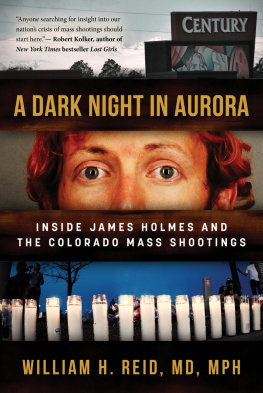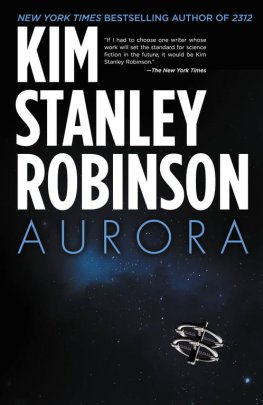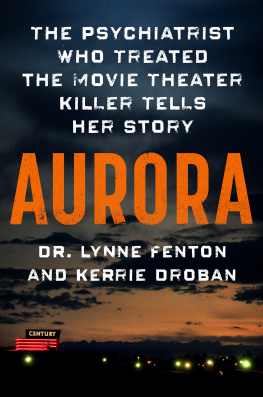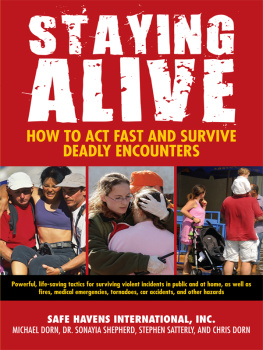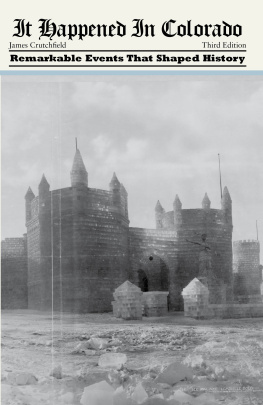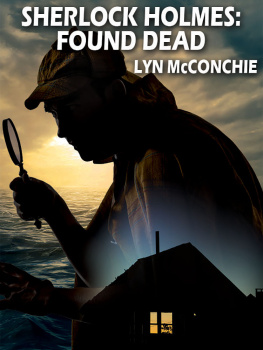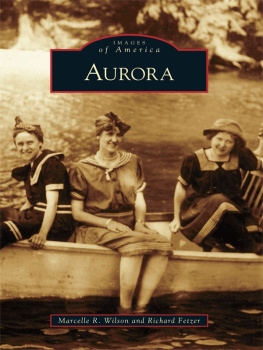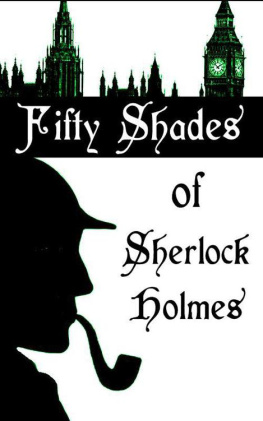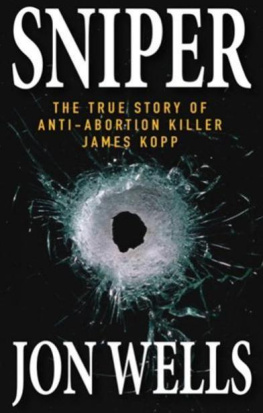Copyright 2018 by William H. Reid
All rights reserved. No part of this book may be reproduced in any manner without the express written consent of the publisher, except in the case of brief excerpts in critical reviews or articles. All inquiries should be addressed to Skyhorse Publishing, 307 West 36th Street, 11th Floor, New York, NY 10018.
Skyhorse Publishing books may be purchased in bulk at special discounts for sales promotion, corporate gifts, fund-raising, or educational purposes. Special editions can also be created to specifications. For details, contact the Special Sales Department, Skyhorse Publishing, 307 West 36th Street, 11th Floor, New York, NY 10018 or .
Skyhorse and Skyhorse Publishing are registered trademarks of Skyhorse Publishing, Inc., a Delaware corporation.
Visit our website at www.skyhorsepublishing.com.
10 9 8 7 6 5 4 3 2 1
Library of Congress Cataloging-in-Publication Data is available on file.
Cover design by Rain Saukas
Cover photos credit AP images
ISBN: 978-1-5107-3552-1
Ebook ISBN: 978-1-5107-3553-8
Printed in the United States of America
Insert photos are derived from evidence used in court proceedings and recently released to the public, in many cases by the prosecution.
Dedication
To the victims, both the deceased and the survivors,
who live daily with memory and disability, the first responders, the
Colorado judicial system, and to Holmess parents,
Arlene and Robert, who did nothing wrong.
Jonathan Blunk
A. J. Boik
Jesse Childress
Gordon Cowden
Jessica Ghawi
John Larimer
Matthew McQuinn
Micayla Medek
Veronica Moser-Sullivan
Alex Sullivan
Alex Teves
Rebecca Wingo
T hanks to my wife, Elise, for her immense help and understanding; my assistant, Jean Hamilton, for retrieving and organizing information for both the writing and the vetting of this book; Mike Campbell, my editor at Skyhorse, and my agent, Linda Langton. Without Richard Ciccone, MD, I might never have received the case referral. Steve Zansberg provided valuable legal counsel. Claudia and David Ladensohn, Terry Ganey, Bob Kolker, Judith Bass, A. D. Oppenheim, and John Mayer helped to get things off the ground and keep them aloft. Appreciation also goes to my former assistant, Kathy Pomeroy, for her work in the case itself, and to federal, Colorado, Arapahoe County, and Aurora law enforcement; Colorado Assistant Attorney General Tanya E. Wheeler; Colorado Mental Health Institute-Pueblo personnel; and Arapahoe County corrections staff. Many readers reviewed and criticized early drafts and chapters: Aileen, Alan, Brandi, Buddy, Dan, Doug, Elise, Jan, Jana, Jodi, Jon, Kyle, Michelle, Mollie, Ron, Skip, and probably more. My brother Dan Reid of Paladin Precision Shooting, LLC (see his recent book, Guns Are Stupid, People Are Smart ) and former FBI SWAT and firearms instructor Joe Holtslag provided valuable information on weapons and tactics. Apologies to the kind folks that Ive inadvertently omitted.
Contents
Introduction
T he Aurora, Colorado, cinema shootings were striking tragedies, leaving a dozen people dead, scores wounded, hundreds emotionally scarred, and a community that will never be the same. But it wasnt the only mass shooting of our time. James Holmes, unique though he is, is not the only killer of his kind. This book arises from a confluence of tragic event, surviving perpetrator, scrupulous investigation, and the uncommon fairness of the American judicial system, a system that provides resources and due process to both sides in even the most heinous of cases. That confluence created a rare opportunity to study a mentally ill but very intelligent, highly organized murderer, the extraordinary events that led to his crimes, the shootings, the trial, and its sequelae.
A Dark Night in Aurora exists because James Holmes survived . He wasnt killed by police; he didnt commit suicide. The elements of the shootings, a web of important precursors, and Holmes himself received extraordinary scrutiny during the three years in which the prosecution and defense prepared for a trial that would last for months. The verdict and sentence were not plea bargained, as often happens in such cases. This time, the investigators and other experts had information and data there is a differencefrom many sources, and their work was shielded from media contamination.
Most of those with access to the huge mass of material collected worked for either the prosecution or the defense. Only two forensic experts were retained in entirely nonpartisan roles, by the judge rather than either side: Colorado psychiatrist Jeffrey Metzner, MD, and me. Dr. Metzner came fairly early to the process; I was retained a bit later, as a result of legal wrangling that caused Judge Samour to search for a second court expert. I had the benefit not only of the existing seventy-five thousand pages of evidence, hundreds of audio and video files, and access to the defendant and scores of witnesses, experts, and others associated with the case, but also of Dr. Metzners earlier work and counsel as I pursued my own investigations.
This book is a result of all that happened and all that was uncovered. It doesnt spring from an authors mind. I didnt make up the characters, imagine their words and actions, or manipulate any events. Ive tried to describe those characters, words, actions, and events with scrupulous accuracy and express my interpretations and opinions in ways that readers will find intriguing. My greater hope is that the book does justice to all concerned.
Finally, a note about the quotes and short transcripts scattered through the chapters. Many are from Holmess conversations with me during our nine private, video-recorded interviews (almost twenty-three hours in all). They are memories, thoughts, explanations, and impressions expressed in his own words after the shootings. One of the early manuscript readers called it an unedited look behind the curtain at a man whose thoughts and plans had been hidden for years, a chance for the reader to see, and consider for himself or herself, what Holmes was like as he spoke with me. Other quotes are taken from text and e-mail exchanges between Holmes and others before the shootings, things that he said or felt, and what others perceived about him, as he moved through the years, then months, then days that culminated in the tragedy.
WHR
January 2018
JIMMY
1. Jimmy
Lots of hugs.
(James Holmess memory of his early childhood)
J ames Eagan Holmes came into this world December 13, 1987, in Scripps Memorial Hospital, La Jolla, California. His mother had a briefly complicated labor and a cesarean section, but there was nothing particularly special about his birth. Arlene and Robert were excited to see their first child, the first grandchild in either of their families.
They named him after a paternal uncle and added Arlenes family name. His birth announcement (which, in a bizarre twist, became a piece of evidence in his later fight against receiving the death penalty) says he weighed seven pounds, eight ounces. Theres a lovely photo of him resting on Roberts chest.
Every baby is cute; every baby is sweet. Every baby brings its parents, and the world, a promise for the future. For the next decade, this baby was a normal little boy named Jimmy.
____________
Arlene Holmes was a nurse at Scripps Memorial when Jimmy was born. Bob was a statistician at the nearby Navy Personnel Center. They had met at Berkeley during the late 1970s, where Arlene pursued a degree in English before going to nursing school and Bob, having graduated in mathematics from Stanford and gotten a masters at UCLA, completed his PhD in statistics. The couple got married in Los Angeles, lived briefly in Washington, DC, while Bob worked with the Bureau of Labor Statistics, and then moved to San Diego.

